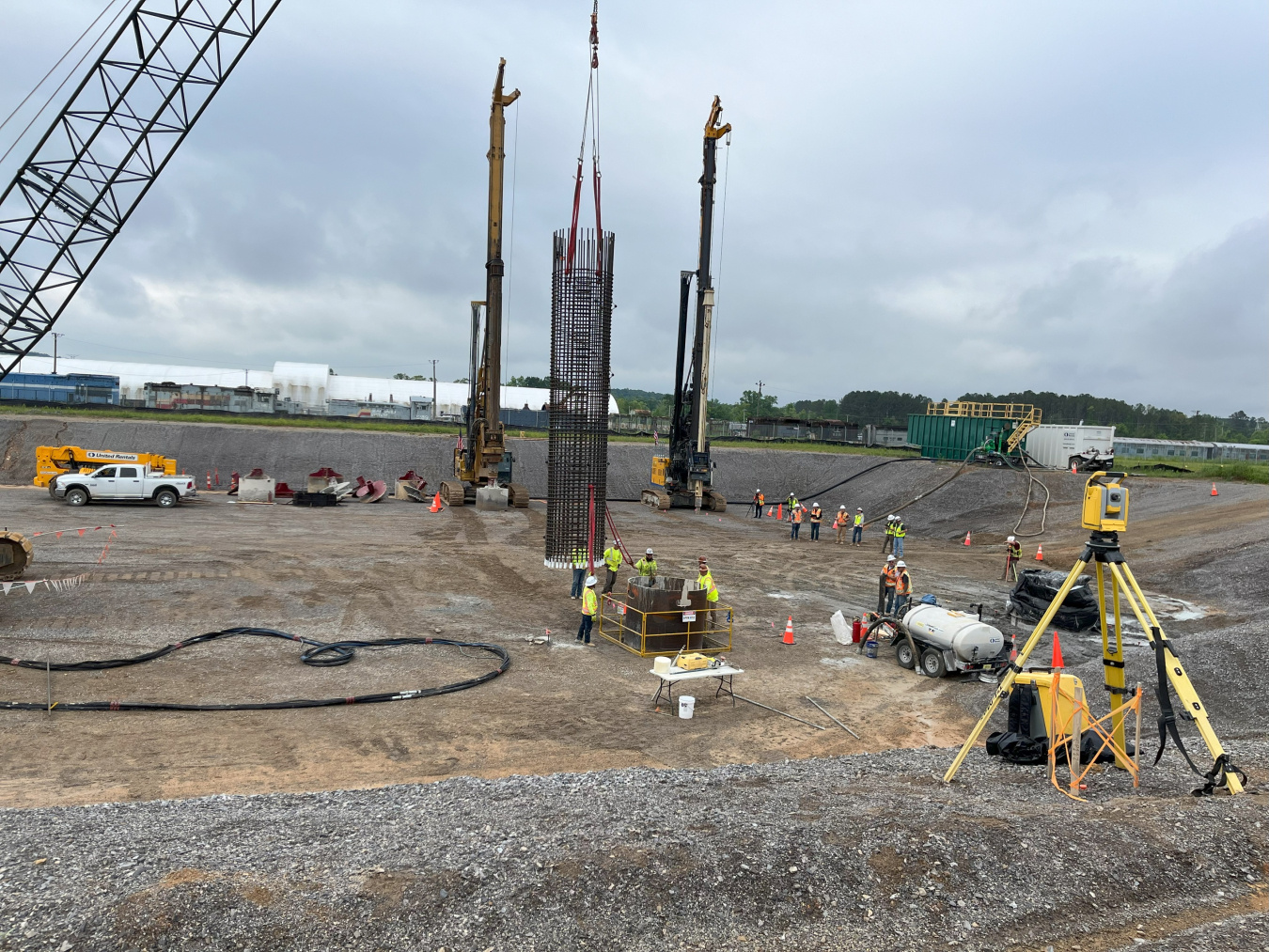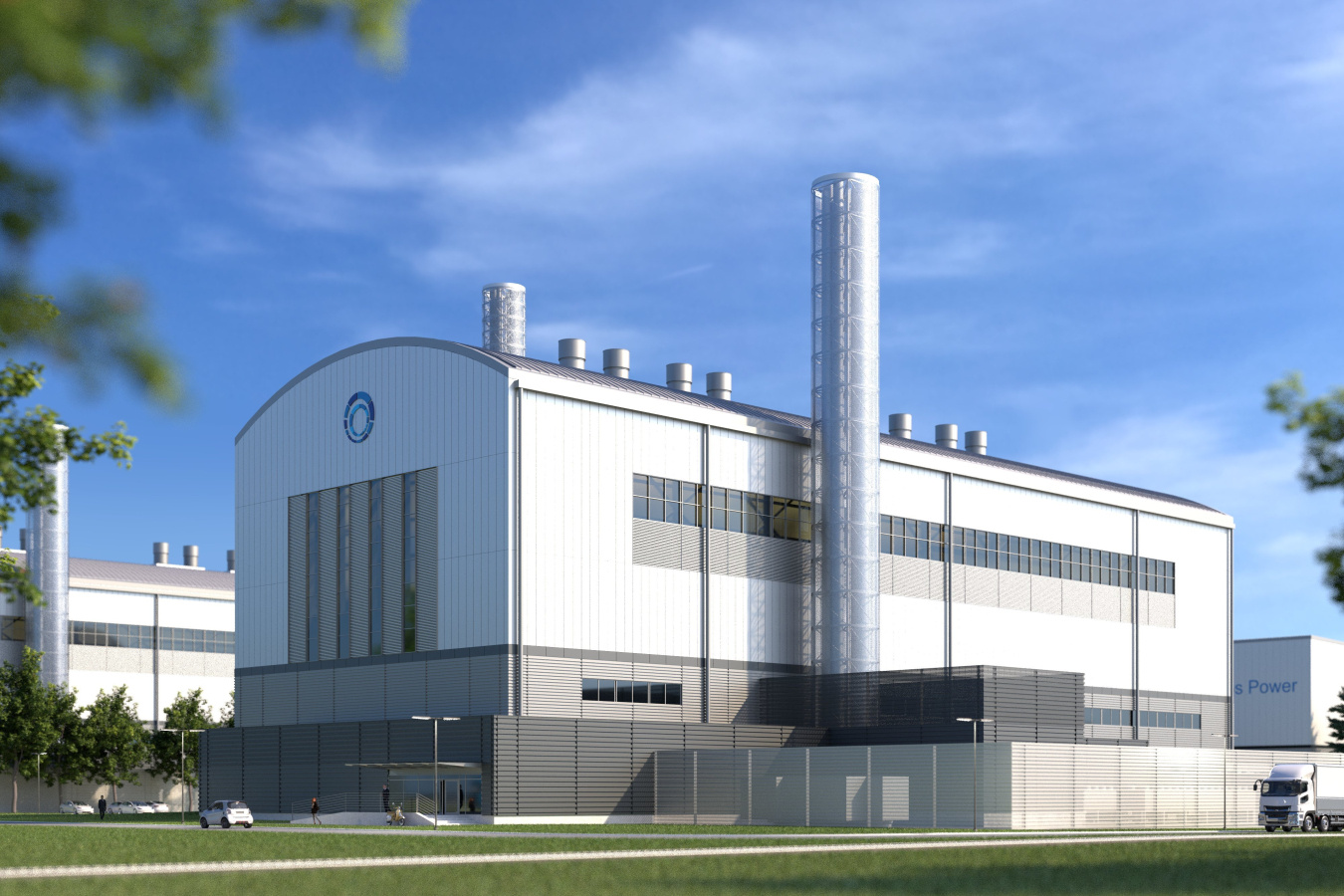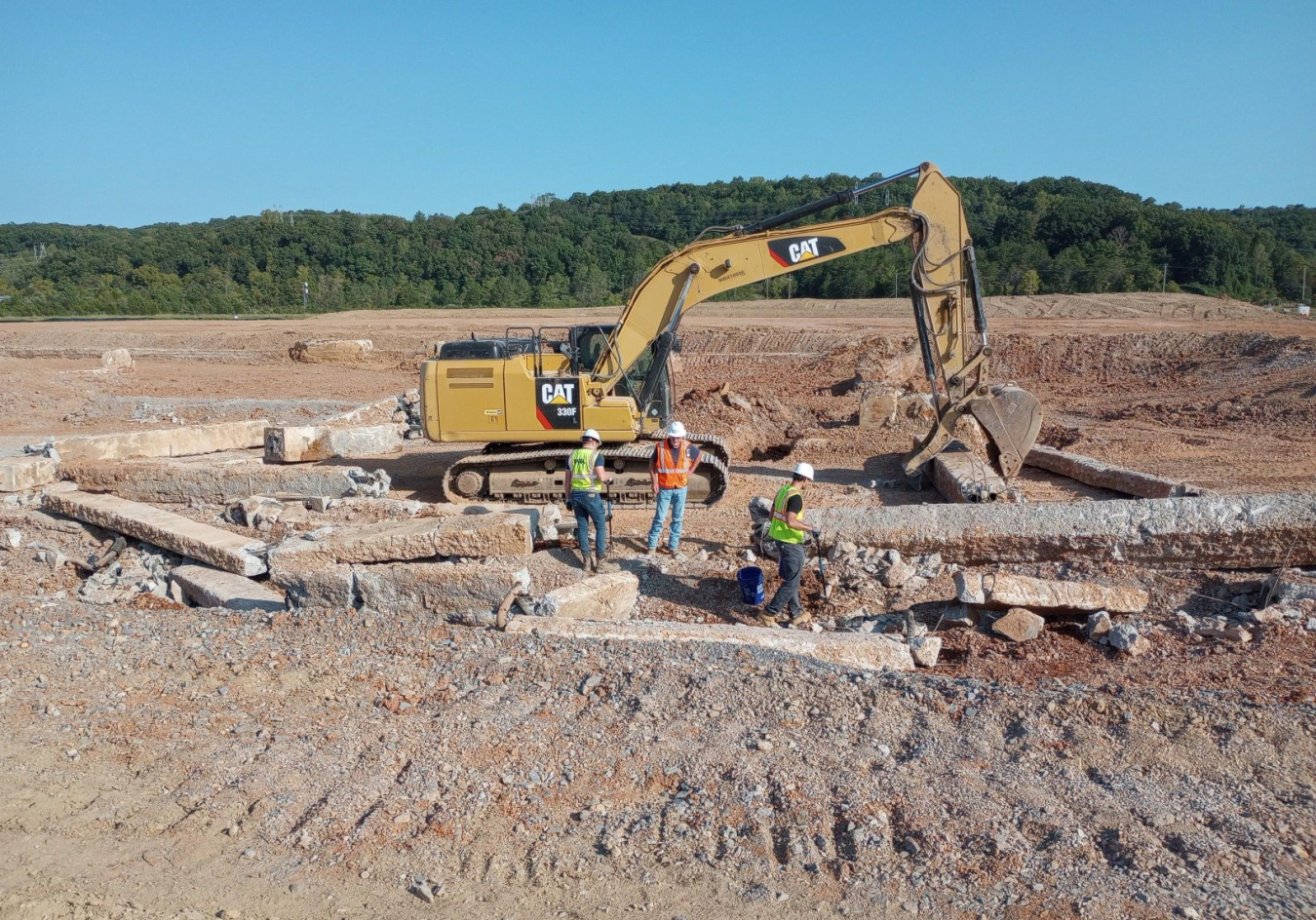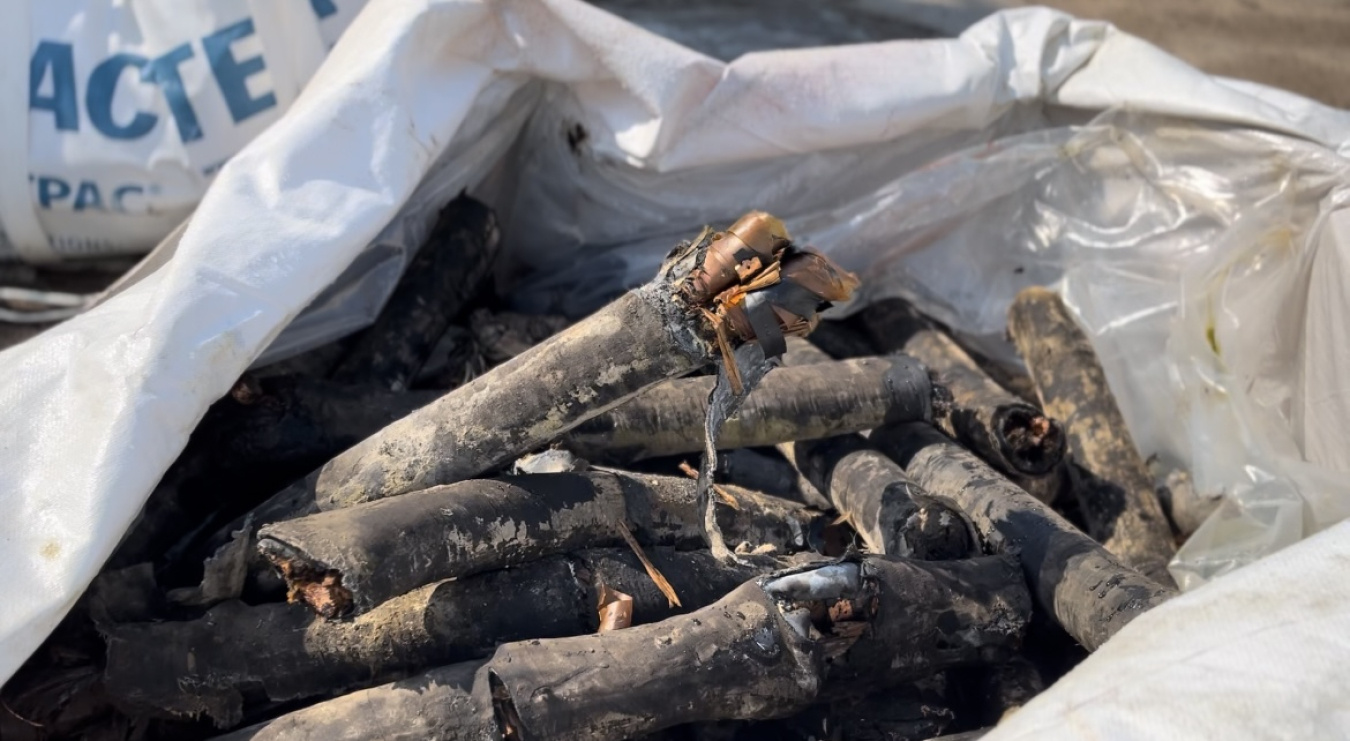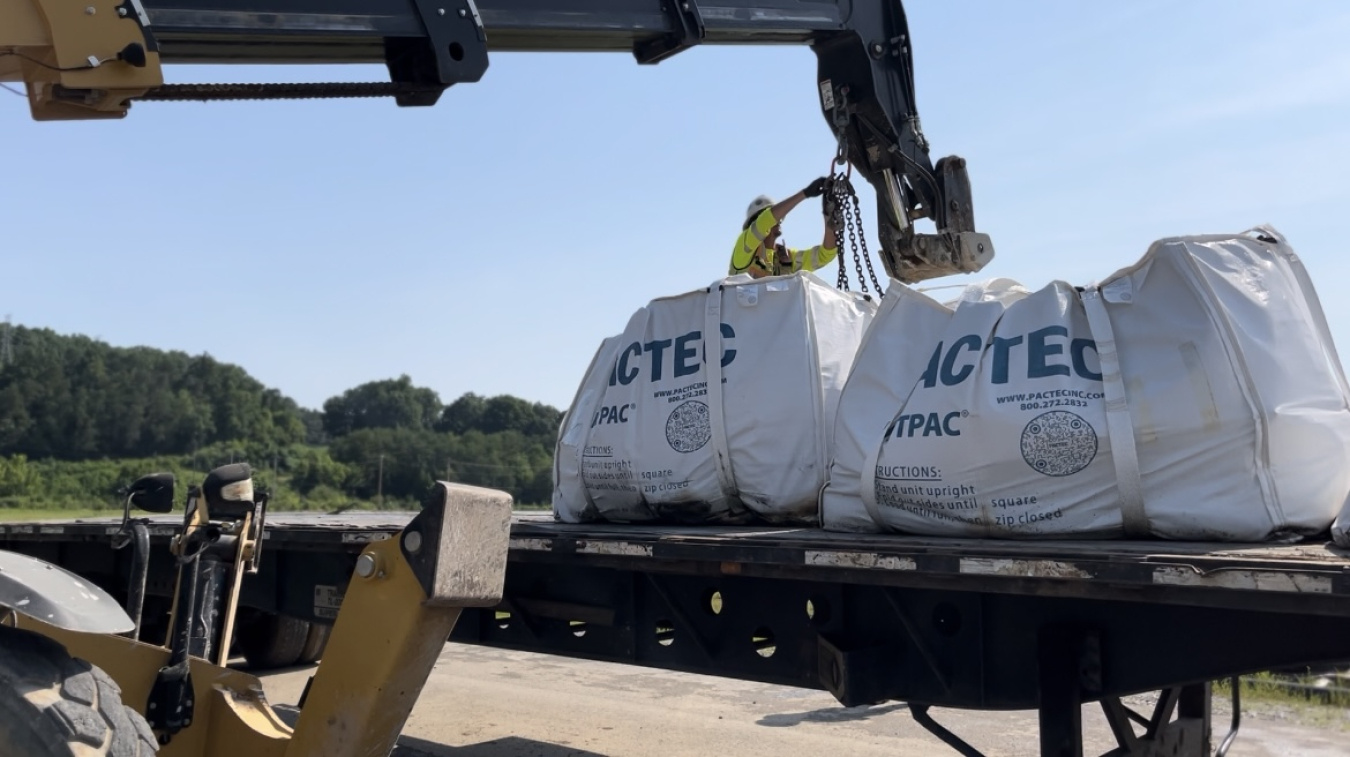In a unique collaboration, the Oak Ridge Office of Environmental Management and contactor UCOR recently assisted one of the largest companies locating at the East Tennessee Technology Park, helping keep a key energy project on track. July 15, 2025
Office of Environmental Management
July 15, 2025Construction is progressing on Kairos Power’s low-power demonstration reactor at the East Tennessee Technology Park at Oak Ridge. Early work involved deep digs requiring removal of subsurface infrastructure. Workers are seen digging and installing piers for the facility’s foundation.
OAK RIDGE, Tenn. — In a unique collaboration, the Oak Ridge Office of Environmental Management (OREM) and contactor UCOR recently assisted one of the largest companies locating at the East Tennessee Technology Park (ETTP), helping keep a key energy project on track.
OREM completed a two-decade cleanup effort at ETTP last year that removed 500 buildings and excavated more than 50,000 dump truck loads of soil. This work cleared away old, contaminated infrastructure and environmental risks, providing the community with large amounts of reusable land to attract new economic opportunities.
One such opportunity came when Kairos Power announced a $100 million investment on the former U.S. Department of Energy-owned land at ETTP in 2021. The company purchased a 185-acre parcel that previously housed the massive K-31 and K-33 uranium enrichment buildings demolished as part of the cleanup. While OREM removed the buildings and slabs, some subsurface electrical infrastructure was left in place.
A rendering of Kairos Power’s Hermes Low-Power Demonstration Reactor when construction is complete. Coordination among Kairos Power, the Oak Ridge Office of Environmental Management and contractor UCOR helped avoid impacts to the construction timeline for this project.
Constructing a sturdy foundation for the company’s Hermes Low-Power Demonstration Reactor involved deep digs requiring the removal of that subsurface infrastructure, including large amounts of lead and copper wire.
“When we started excavation, we coordinated with the Department of Energy, and they let us know there were some underground duct banks,” said Marty Bryan, Tennessee Site Integration director for Kairos Power. “We coordinated closely with them throughout the whole process, and they were very good at supporting us and working with us on the characterization of this material.”
Through coordination and support from OREM and UCOR, Kairos Power was able to confirm the excavated materials were safe for normal disposal, while a significant portion could be recycled to generate major savings. With this confirmation, Kairos Power was able to recycle 18 super sacks containing more than 70,000 pounds of lead and copper.
Through this partnership, the company was able to maintain the timetable for the Hermes project, which is helping to commercialize advanced reactor technology to support the nation’s energy future. This ongoing effort avoids costly disposal pathways, generates revenue, and provides lessons learned and best practices for future digs across the site as industrial development continues.
Construction crews at the East Tennessee Technology Park at Oak Ridge excavate old underground electrical duct banks that once supported the K-33 uranium enrichment facility.
Excavated old electrical infrastructure beneath the site of the former K-31 and K-33 uranium enrichment facilities at the East Tennessee Technology Park contained large amounts of lead and copper.
Workers supporting construction of Kairos Power’s low-power demonstration reactor at the East Tennessee Technology Park load sacks of lead and copper from excavations for recycling, which will generate savings for the company.
To date, OREM has transferred more than 1,800 acres at ETTP for economic development. That land has attracted more than 25 businesses that have announced nearly a billion dollars in capital investments, and more transfers and developments are expected in the years ahead.
ETTP is formerly known as the K-25 Site or Oak Ridge Gaseous Diffusion Plant, which operated from the mid-1940s until 1985. The plant was originally used to enrich uranium as part of the Manhattan Project, but it continued operations after World War II to produce enriched uranium for defense missions and commercial power generation.
-Contributor: Ben Williams
To receive the latest news and updates about the Office of Environmental Management, submit your e-mail address.


